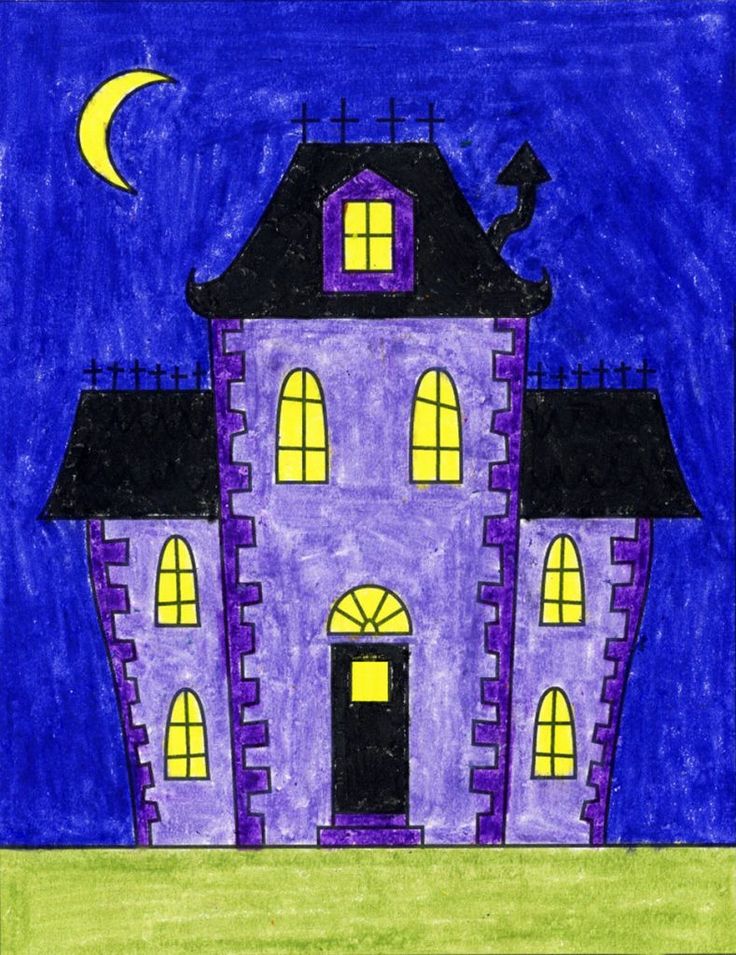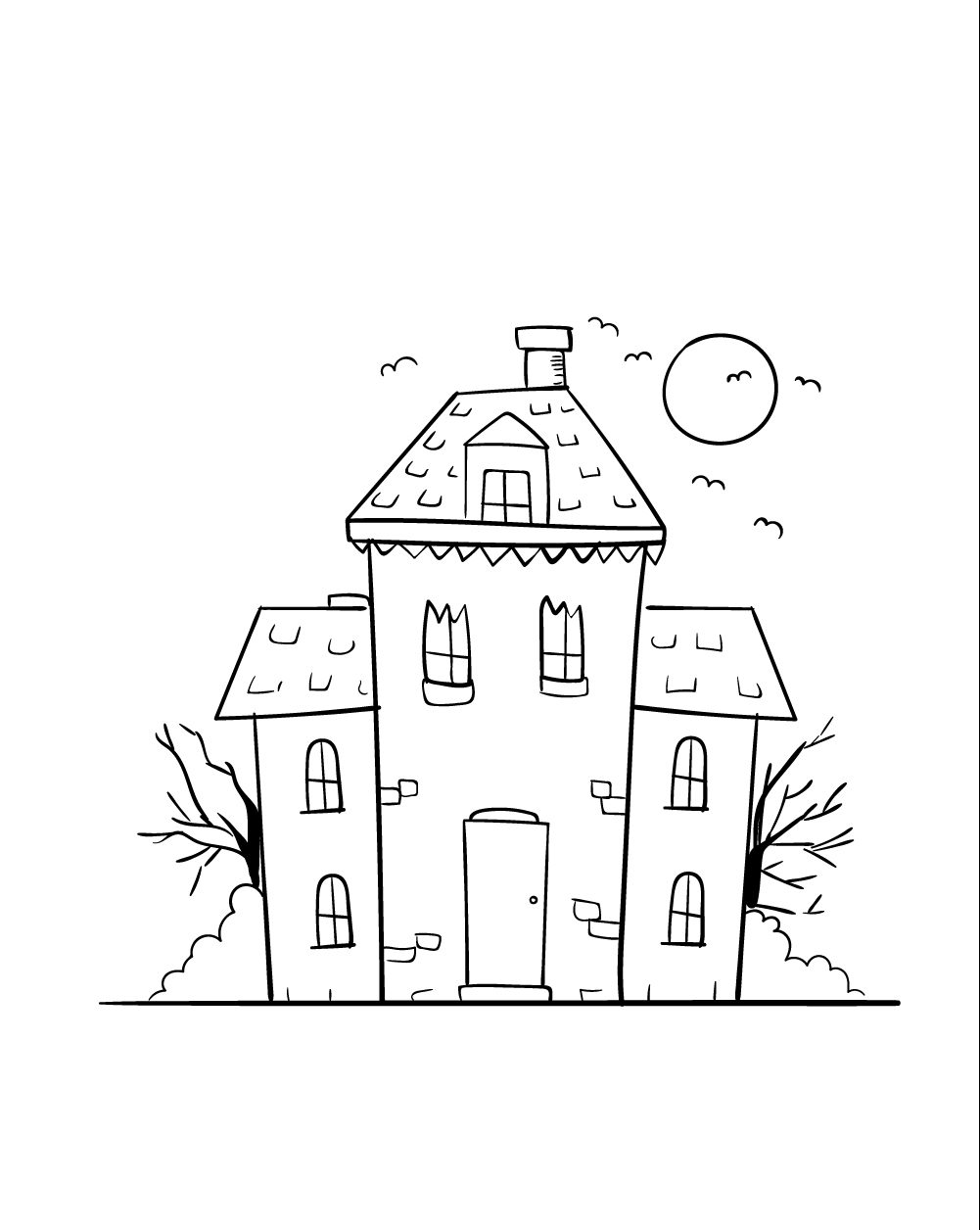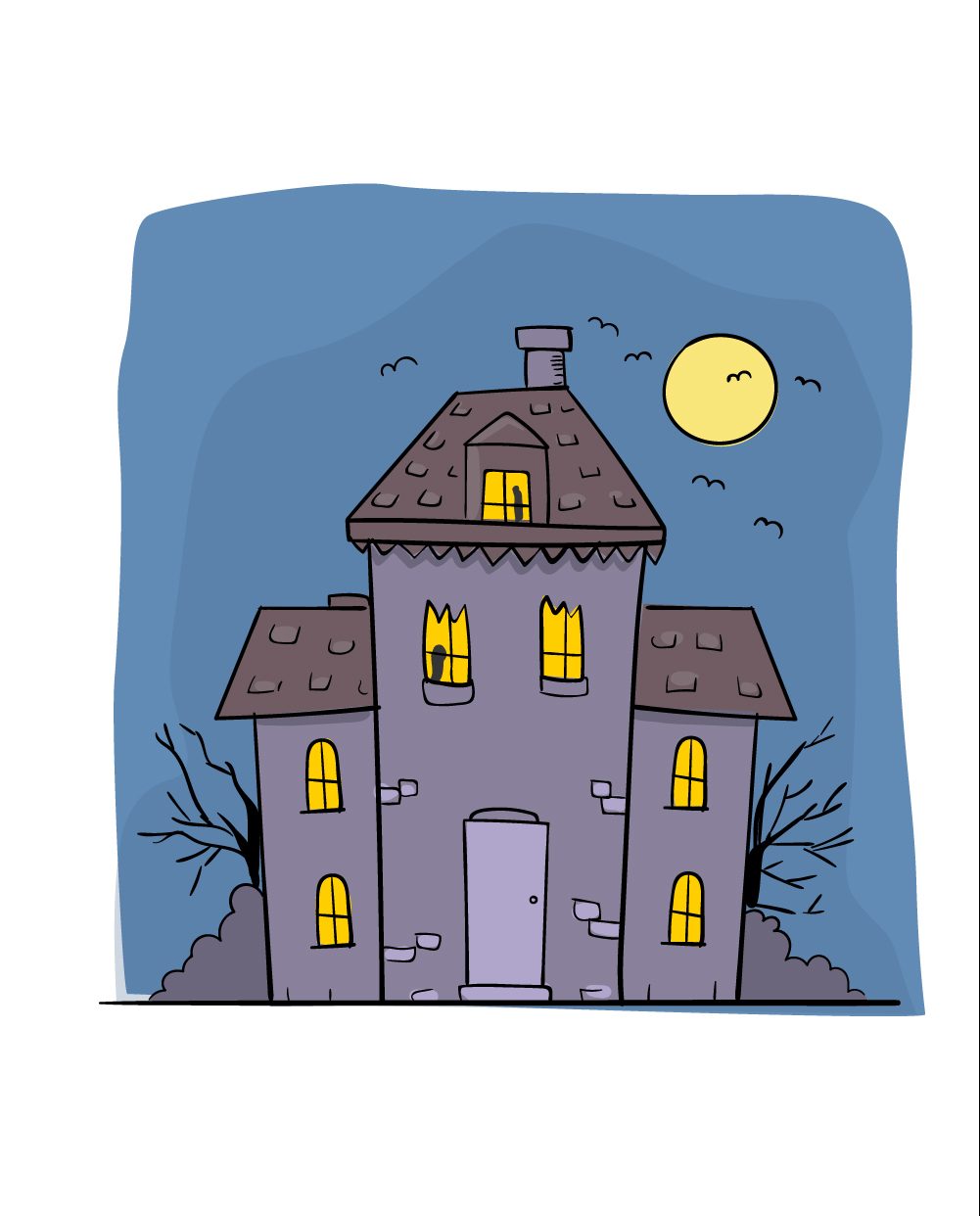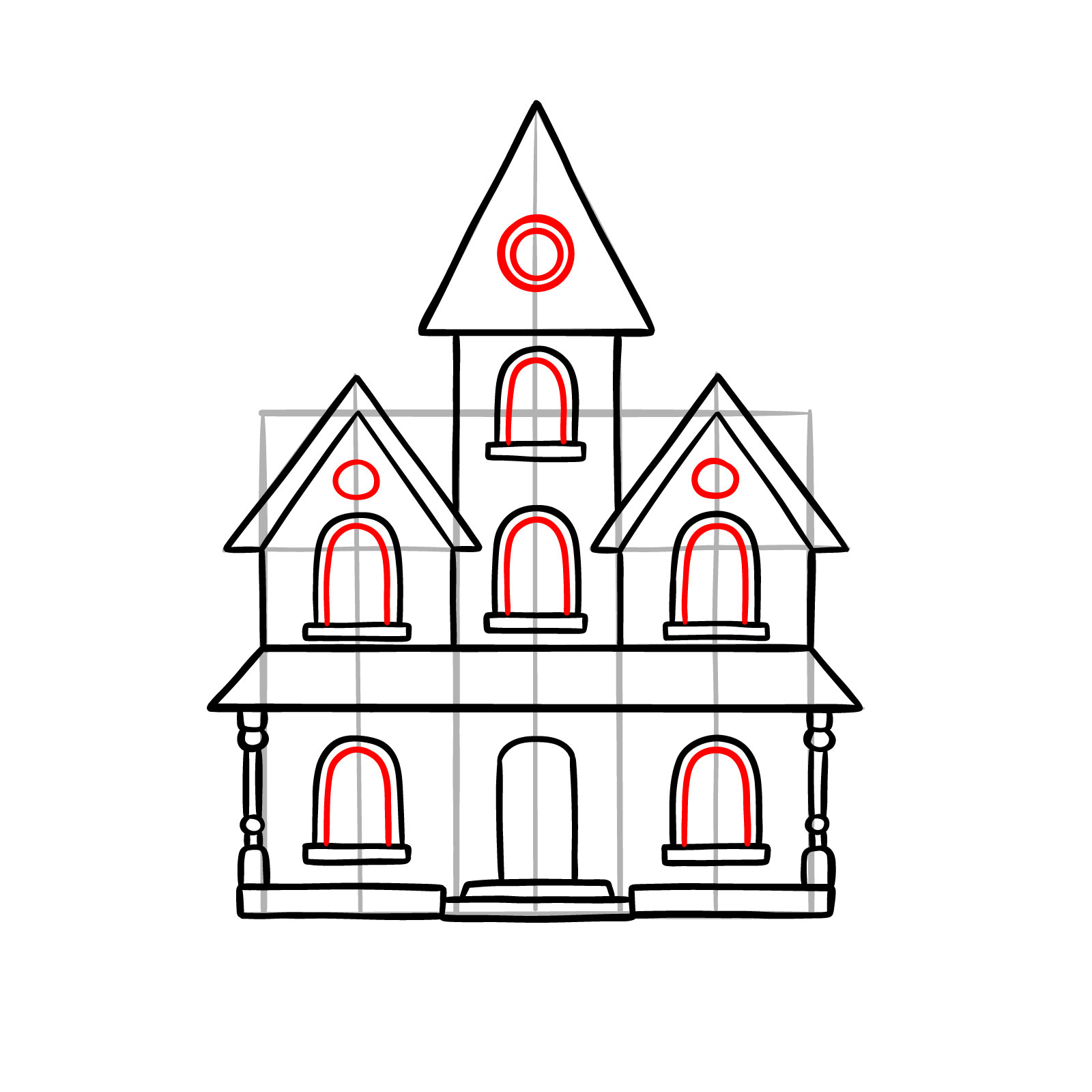Haunted House Drawing A Step-by-Step Guide to Creating Your Own Spooky Masterpiece
Haunted house drawing is more than just an art project—it is a portal to a realm of mystery, suspense, and creative expression. As the chill of autumn sets in and Halloween draws near, many artists find themselves captivated by the allure of spooky abodes. These drawings evoke feelings of wonder, fear, and nostalgia, transporting both the creator and the viewer into a narrative that is equal parts eerie and imaginative. Haunted houses have been celebrated in folklore, cinema, and literature for generations, and the process of drawing one invites artists to explore the interplay of light, shadow, and architectural decay. In this article, we delve deep into the world of haunted house drawing, examining its historical context, the necessary tools and materials, a step-by-step creation process, varied thematic interpretations, advanced techniques, and the art of sharing your work. Whether you are a beginner or an experienced artist, this comprehensive guide will inspire you to let your imagination run wild and capture the haunting beauty of these mysterious structures.
The History and Allure of Haunted Houses
The fascination with haunted houses spans centuries and cultures. In many traditions, abandoned mansions, dilapidated barns, or secluded estates are often associated with ghostly legends and supernatural occurrences. These eerie dwellings are imbued with a sense of history and mystery that invites endless interpretation.
In Western culture, the archetype of the haunted house emerged from Gothic literature of the 18th and 19th centuries. Novels like Mary Shelley’s Frankenstein and the works of Edgar Allan Poe brought forth imagery of decaying estates, mysterious family curses, and spectral presences. These narratives provided the framework for what many artists now consider when they imagine a haunted dwelling. Over time, the idea of a haunted house evolved—from the eerie castles of Europe to the abandoned asylums and derelict mansions of modern urban legends. Today, the haunted house remains a timeless symbol of the unknown, its image continually reinterpreted by filmmakers, writers, and visual artists alike.
At its core, the allure of a haunted house drawing lies in its ability to evoke deep-seated emotions. The human brain is hard-wired to respond to mystery, and the depiction of a forsaken building with creaking floors, broken windows, and overgrown vines triggers a primal mix of excitement and fear. This emotional response is why haunted houses continue to be a popular subject for Halloween art and storytelling. Artists tap into these primal feelings, using their medium to explore themes of isolation, decay, and the supernatural. As you begin to draw, you are not just recreating a structure—you are inviting your audience to share in the thrill of a ghost story woven into every line and shadow.
Haunted houses have transcended the realm of simple ghost stories. In movies such as The Shining and The Haunting, these structures serve as characters in their own right, each with a personality that is dark, complex, and steeped in history. Art, too, has embraced this narrative, with countless painters and illustrators exploring the contrast between architectural grandeur and eerie neglect. This duality—beauty intertwined with decay—is what makes haunted house drawing a compelling and ever-relevant subject. In every sketch, there is a story waiting to be told, a narrative that can shift from whimsical to terrifying with just a few strokes of the pencil.
Tools and Materials for Haunted House Drawing
Before you begin the creative journey of haunted house drawing, it is essential to gather the right tools and materials. The quality of your materials can greatly influence the final outcome of your artwork, providing you with the ability to render fine details and subtle textures that bring the haunted scene to life.
Traditional Drawing Tools
Pencils and Erasers: Start with a selection of drawing pencils that vary in hardness. A range from HB to 6B will allow you to create everything from light, delicate lines to deep, dark shadows. A high-quality eraser is indispensable for refining your sketch and correcting mistakes.
Fine Liners and Inks: For those who prefer a bold, defined look, fine liners are ideal. They can be used to trace over pencil lines, giving your drawing a crisp finish. Inking also helps to accentuate the eerie details that define a haunted structure.
Colored Pencils and Markers: Once you have established the basic form and details of your haunted house, colored pencils or markers can add a layer of vibrancy and mood. Dark, muted colors like deep greens, grays, blacks, and purples are especially effective at creating a spooky atmosphere. Consider using red or orange accents to highlight certain features, such as a flickering candle or an ominous window light.
Paper and Surfaces
The choice of paper plays a significant role in the texture and overall feel of your drawing. Opt for a sturdy drawing paper that can withstand multiple layers of pencil and ink. For those exploring mixed media, a textured paper may provide an added dimension to your shadows and fine details. Some artists even experiment with digital drawing tools, using graphic tablets and software to simulate traditional drawing techniques. While the medium might differ, the principles of light, shadow, and detail remain the same.
Additional Tools and Techniques
Consider incorporating blending stumps, tortillons, or even soft brushes for shading purposes. These tools help smooth transitions between dark and light areas, enhancing the three-dimensionality of your drawing. If you work digitally, many programs offer a variety of brushes that mimic the look of traditional media, enabling you to experiment with different textures without committing to paper.
Each material and tool serves as an extension of your creative vision. Experiment with different combinations until you find the setup that best helps you express the eerie, atmospheric quality of a haunted house.
Step-by-Step Process for Creating a Haunted House Drawing
Creating a haunted house drawing is a multi-layered process that involves planning, sketching, refining, and finally, coloring your work. Below is a detailed, step-by-step guide to help you achieve a hauntingly beautiful piece of art.
Sketching the Basic Structure:
Begin by lightly sketching the overall shape of the house. Haunted houses often feature unconventional and asymmetrical forms. Think of tall, narrow towers, slanted roofs, and irregular windows. Don’t worry about getting everything perfect in the first go; this stage is about setting the foundation. Consider drawing a rough outline that hints at the overall structure without delving into the finer details.
Defining Architectural Details:
Once you have the basic outline, add architectural features that give character to your drawing. These can include broken windows, crooked doors, and peeling paint. Incorporate details like rusty shutters and uneven walls that add to the feeling of neglect and decay. Each detail you add helps create a narrative—perhaps the house was once grand, now left to the ravages of time.
Incorporating Surrounding Elements:
A haunted house is never alone. Enhance your drawing by adding environmental elements that heighten the eerie atmosphere. Sketch twisted, barren trees, a crescent or full moon in the sky, bats fluttering in the darkness, and even a nearby graveyard with weathered tombstones. These elements work together to form a complete and immersive setting, drawing the viewer into the world you have created.
Adding Character and Life:
To breathe life into your haunted house, consider incorporating subtle elements of movement or presence. A ghostly figure peering out from a window, a skeletal hand emerging from behind a door, or even faint wisps of fog can suggest that the house is not empty. These imaginative details add layers of storytelling and invite the viewer to explore the mysterious history of the dwelling.
Shading and Texture Application:
Shading is crucial in converting your flat sketch into a piece that exudes depth and realism. Identify the light source in your drawing, and darken the areas that would naturally fall into shadow—under the eaves, behind structures, or inside empty windows. Use a combination of cross-hatching, stippling, or smooth gradients to create textures that mimic wood grain, crumbling stone, and the decay of old structures. The interplay of light and dark is what transforms a simple sketch into an atmospheric work of art.
Final Inking and Coloring:
With the detailed sketch and shading complete, trace over your work with fine liners or ink to define the structure. Once the ink is dry, begin adding color. Choose a palette that reinforces the spooky mood—dark greens, muted purples, and deep blacks can set the tone. Use lighter hues sparingly to create contrast and draw attention to focal points, such as the glow from a window or the outline of a ghostly figure. Experiment with layering colors to achieve a textured, multi-dimensional effect.
Throughout this process, remain flexible and let your creativity guide you. A haunted house drawing is not about strict adherence to realism; it is about evoking a mood and telling a story through visual cues. Each stroke of your pencil and brush contributes to a narrative that is uniquely yours, inviting the viewer to linger and imagine the history behind every cracked wall and creaking door.
Exploring Various Themes in Haunted House Art
One of the most exciting aspects of haunted house drawing is the freedom to explore a wide variety of themes. The haunted house can serve as a canvas for expressing different moods, historical periods, and artistic styles. Here are some popular themes that you might consider for your next project:
Victorian Gothic:
Embrace the elegance and decay of the Victorian era by creating a mansion that is ornate yet ominous. Think of intricate details like gargoyles, winding staircases, and stained-glass windows. The contrast between the refined architecture and the eerie atmosphere can create a visually stunning piece that nods to classic Gothic literature.
Abandoned Asylum:
Channel the energy of forgotten institutions by drawing an old asylum. Focus on crumbling walls, flickering lights, and long, echoing hallways. This theme allows you to play with elements of sterility and chaos simultaneously. The clinical, yet deteriorated look of such a building can evoke a sense of loneliness and despair, adding an emotional layer to your drawing.
Creepy Carnival:
For a more playful yet unsettling theme, imagine a haunted carnival. Distorted mirrors, abandoned rides, and eerie clown figures can transform your haunted house into a surreal spectacle. This theme provides an opportunity to experiment with vibrant yet twisted colors and unexpected shapes, merging whimsy with a touch of terror.
Classic Haunted Mansion:
The quintessential haunted mansion remains a favorite subject. Envision a sprawling estate enveloped by cobwebs, with eerie portraits lining the halls and spectral lights glimmering in the windows. This theme allows you to incorporate traditional elements—such as creaking doors, overgrown gardens, and mysterious attic spaces—that are synonymous with ghost stories and Halloween lore.
Modern Urban Decay:
In contrast to the traditional styles, you might explore a contemporary approach by drawing a modern building succumbing to neglect. This theme can reflect current societal issues such as urban decay, abandonment, and the passage of time. The juxtaposition of modern architecture with elements of decay creates a compelling narrative about change and loss.
Each theme invites you to experiment with different techniques and storytelling devices. By choosing a theme, you set the stage for the mood and aesthetic of your drawing, allowing your creative vision to flourish. Whether you lean toward the elegance of Gothic mansions or the surrealism of a haunted carnival, the key is to let the theme guide the details and overall atmosphere of your artwork.
Tips, Techniques, and Advanced Strategies for Enhancing Your Haunted House Drawing
For artists looking to elevate their haunted house drawings from simple sketches to deeply atmospheric masterpieces, several advanced techniques and creative tips can be employed. These strategies not only enhance the visual impact of your work but also enrich the storytelling aspect of your art.
Mastering Light and Shadow:
One of the most critical elements in creating a spooky atmosphere is the effective use of light and shadow. Begin by determining a clear light source—this could be a moonlit glow, a flickering candle, or even an abstract source of eerie light. Use gradients to smoothly transition from bright highlights to deep, dark shadows. Experiment with multiple layers of shading to create a sense of depth, ensuring that each component of your drawing feels three-dimensional.
Incorporating Texture and Detail:
Texture can transform a flat image into a lifelike representation. Use techniques such as cross-hatching, stippling, and blending to simulate different surfaces—rough brick walls, splintered wood, and crumbling stone all contribute to the overall mood. Additionally, consider adding subtle details like cracks, peeling paint, or ivy creeping up the facade. These small touches can make your drawing more immersive and authentic.
Utilizing Perspective and Composition:
A strong sense of perspective can guide the viewer’s eye and add a dynamic quality to your drawing. Experiment with one-point or two-point perspective to create an illusion of space and depth. Place your haunted house off-center to introduce tension and mystery, and use leading lines, such as winding paths or overhanging branches, to direct the viewer’s gaze into the drawing. The careful composition of elements not only increases visual interest but also enhances the narrative flow of the artwork.
Expressing Movement and Atmosphere:
Haunted houses are rarely static. Even in a still drawing, you can suggest movement—whether it’s the swirling of fog, the rustling of leaves, or the subtle motion of a ghostly figure. Use gentle, curved lines and soft transitions to imply that something is stirring within the darkness. These techniques add an element of suspense and help maintain the viewer’s engagement with the piece.
Experimenting with Color and Contrast:
While traditional haunted house drawings often rely on a dark, muted palette, don’t be afraid to experiment with unexpected color combinations. Contrasting colors can highlight key features—perhaps a splash of red that draws attention to a mysterious doorway or a burst of yellow that suggests eerie illumination. Consider using color to convey emotion; cooler tones may evoke sadness or isolation, while warmer accents can suggest danger or urgency.
Incorporating Digital Techniques:
For artists who work in the digital medium, modern software tools provide additional layers of creativity. Digital brushes can mimic traditional textures, and layering techniques can be used to refine lighting, color, and detail. Digital art also allows for quick experimentation—adjusting opacity, applying filters, or even incorporating photographic textures can bring your haunted house drawing to life in innovative ways.
Developing Your Unique Style:
Finally, the most important tip is to allow your unique artistic voice to shine through. While techniques and methods are valuable, it is your personal interpretation of the haunted house that makes your artwork stand out. Experiment, take risks, and learn from both your successes and mistakes. Over time, you will develop a style that is distinctly yours—one that captures the eerie magic of haunted houses in a way that resonates with your audience.
Once you have completed your haunted house drawing, the journey does not end there. Sharing your work with a community of fellow artists and enthusiasts can be incredibly rewarding. Social media platforms, online art communities, and local exhibitions are excellent venues to showcase your eerie masterpiece. When sharing your drawing, consider writing a brief narrative or description to give viewers insight into your creative process and the inspiration behind your work. Using hashtags like #HauntedHouseDrawing, #HalloweenArt, or #SpookyArt can help connect you with others who share your passion.
Engaging with a Community
Interacting with fellow artists provides opportunities for feedback, collaboration, and inspiration. Online forums, art groups, and even local workshops can offer constructive critiques that help you refine your skills. Sharing behind-the-scenes insights—such as the challenges you encountered or the techniques that worked best—can inspire others and foster a supportive creative environment. Remember that art is a dialogue, and every piece you share contributes to a larger conversation about creativity and expression.
Reflecting on the Creative Process
Every drawing is a journey, and haunted house drawing is no exception. Reflect on the process from the initial spark of inspiration to the final touches that brought your vision to life. Consider keeping a sketchbook or journal to document your ideas, experimental sketches, and lessons learned. This reflection not only improves your future work but also serves as a personal archive of your artistic growth over time.
The Therapeutic and Transformative Nature of Art
Creating art—especially art that explores themes of darkness and mystery—can be a therapeutic experience. The act of drawing allows you to channel your emotions, confront your fears, and ultimately transform them into something beautiful and thought-provoking. Haunted house drawings, with their mix of decay and intrigue, remind us that beauty can be found in even the most unexpected places. They encourage us to embrace both light and shadow, revealing that every story has depth and complexity.
In conclusion, haunted house drawing offers a unique blend of technical challenge and imaginative freedom. From exploring the rich history of haunted houses to experimenting with advanced shading and perspective techniques, each step of the process is an opportunity to delve deeper into your creativity. Whether you are inspired by classic Gothic mansions, eerie asylums, or even modern interpretations of urban decay, every haunted house drawing tells a story that is uniquely your own. As you continue to develop your artistic skills, remember that the true magic lies in your ability to create a world that captivates, unsettles, and ultimately delights.
EN -
Santosh Deshmukh Viral Video Photo The Shocking Evidence That Sparked Outrage
Video Rebecca Klopper Twitter Indonesian Actress at Center of Explicit Video Controversy
Bu Guru Salsa Viral New Video Link An In-Depth Analysis
Video Bokeh Background Jpg Sma Full 2023
Luigi Mangione Video Leak Unveiling the Controversy
Camilla Araujo Leaked Unpacking The Viral Controversy And Its Impact
Gia Duddy Leak Unraveling The Controversy And Its Implications




 | Sitemap | Mail
| Sitemap | Mail